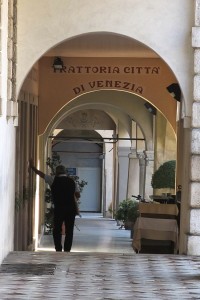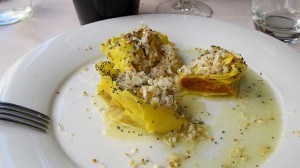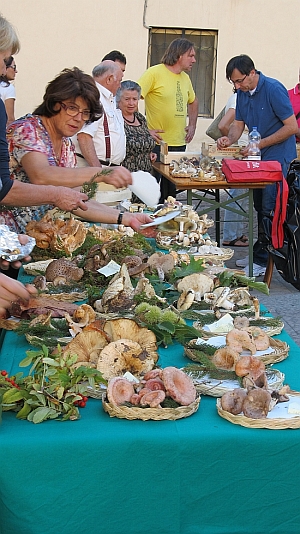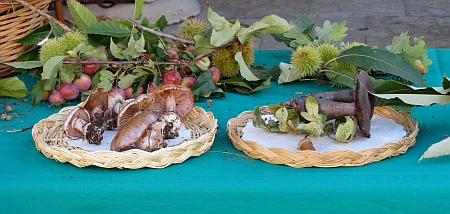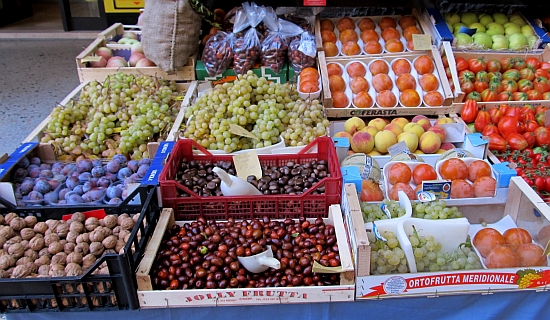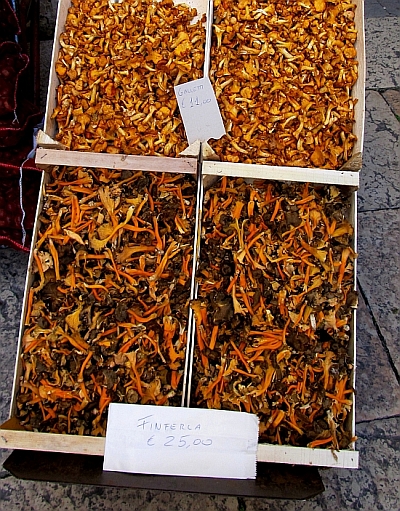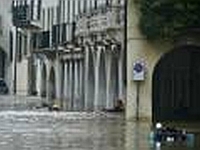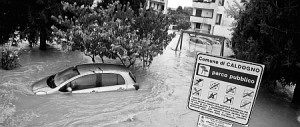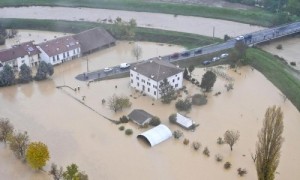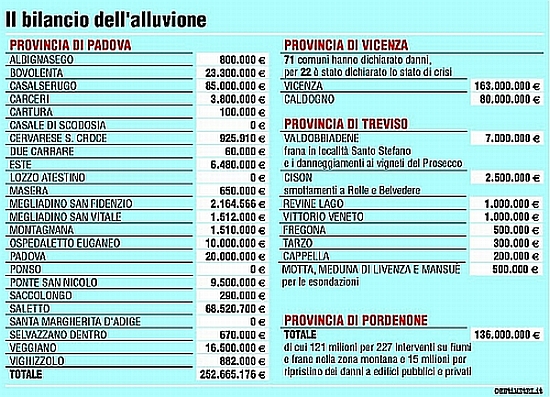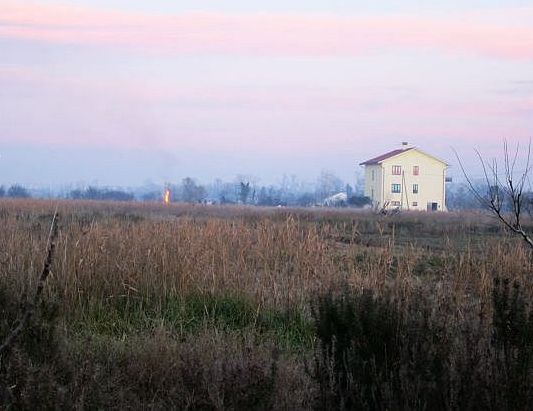
Last Saturday night, while you were doing whatever you do, we were on Sant’ Erasmo participating in a wild pagan ritual. It’s known as panevin (pahn-eh-VEEN)or, more simply, brusar la vecia (broo-zahr ya VEH-cha — burn the old woman).
I’ve experienced it many times from a downwind distance, inhaling the smoke of many faraway bonfires, but three days ago was the first time I ever participated. The Finotello family, whose market garden Sapori di Sant’ Erasmo has long since become our favorite produce store, told us they were going to be burning the old lady and sure, we could come too.
We always row over in a mascareta, partly because it’s a great motivation to go rowing, and also, not incidentally, the boat makes it easy to bring back our kilos of cauliflower or cabbage or tomatoes or eggplant or whatever’s good that day.
So around 4:00 we wandered across the span of lagoon between Castello and Sant’ Erasmo, threading our usual path along the flank of the Certosa and Vignole islands. The sun was going down, and it felt a little like we were sneaking out of the dorm after curfew, to be going out at the time we’re usually heading home.
I’ve written at other times about the history of this prehistoric practice, which is especially at home in the Northeast of Italy, so I’ll limit the scholarly details. It’s enough to remember that the effigy represents the old (year, primarily) and therefore must be extinguished as a propitious start to the new (year, of course); that it’s an excellent way to dispose of the year’s prunings, which would have to have been burned eventually anyway; and that it’s a great excuse to end the holiday season with a party that also can keep you warm.
Needless to say, people in Mestre complained about the smoke (I say “needless,” because nothing happens here without some wail of protest from somebody, including me). It wasn’t the fumes from Sant’ Erasmo that bothered them, but from various places close to the city. Unbreathable air! We had to stay shut in our houses with all the windows and doors sealed! Call the fire department, something’s burning!
I give a little slack to people with genuine pulmonary issues, or anyone who might have encountered smoke caused by burning rubber or plastic.
Otherwise, here’s my message to the good burghers of Mestre: Get over it.
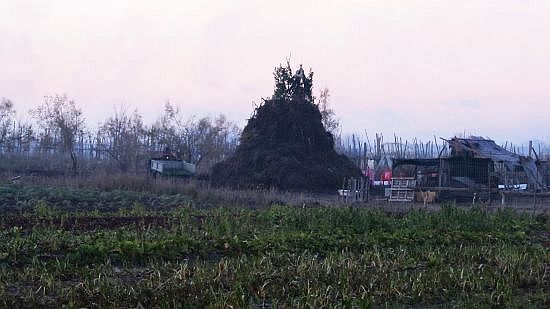
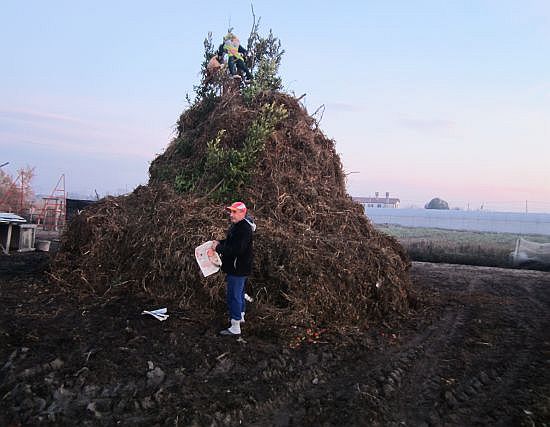

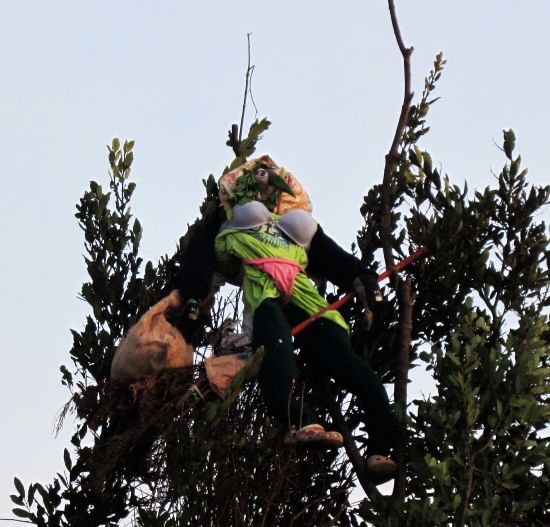
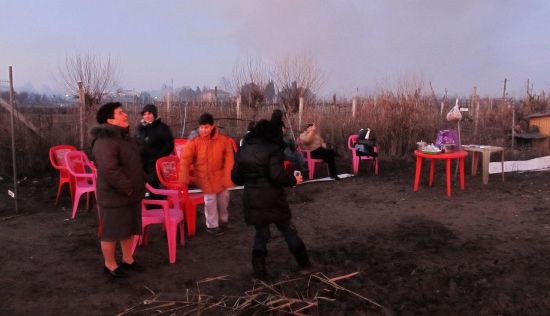
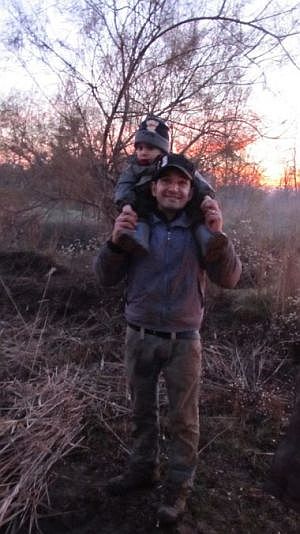
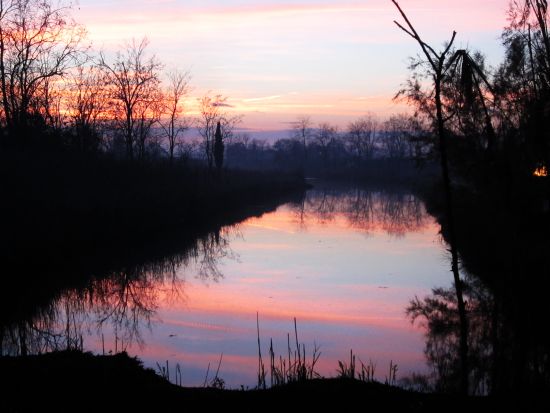
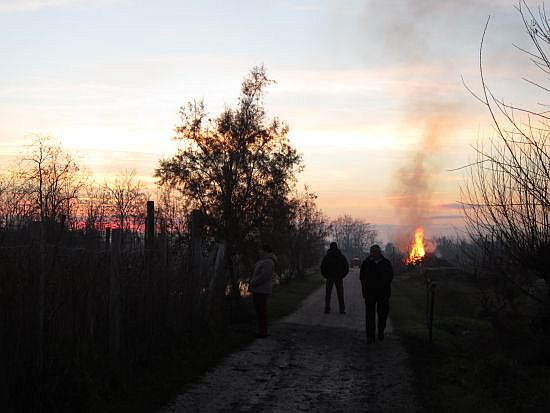
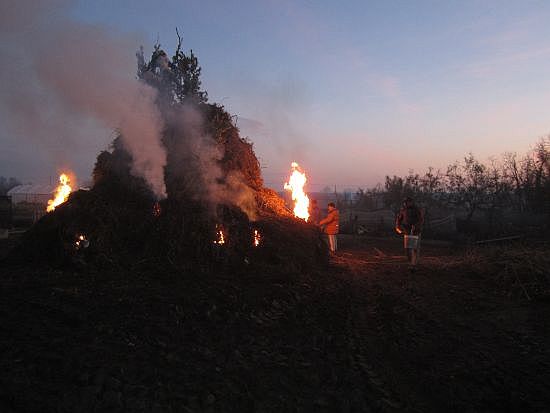
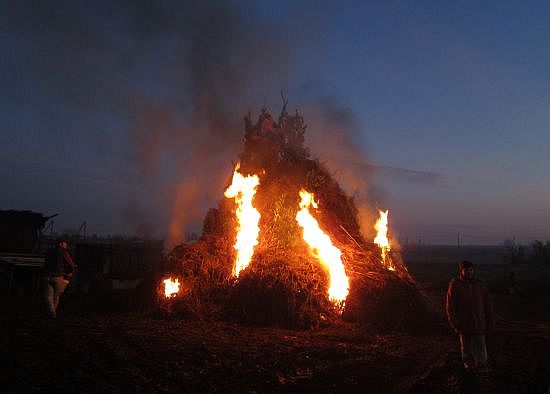
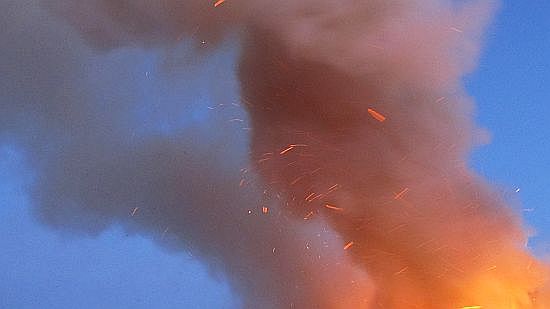
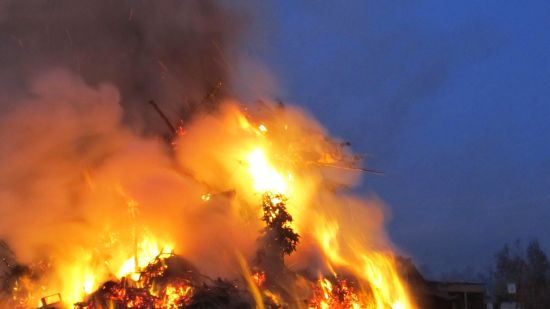
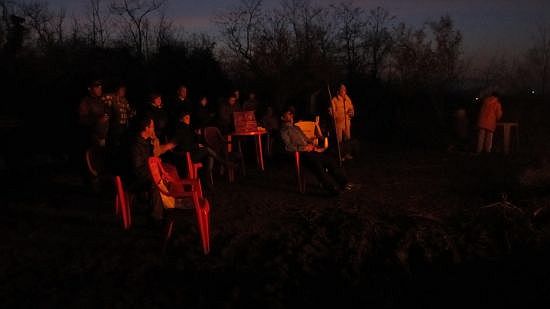
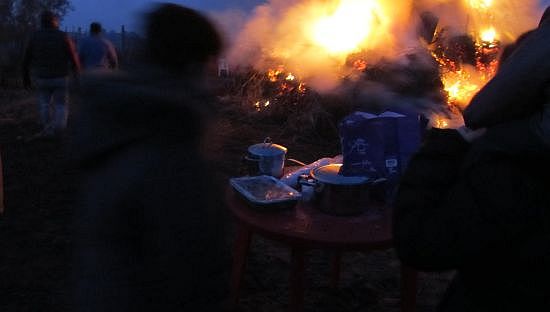
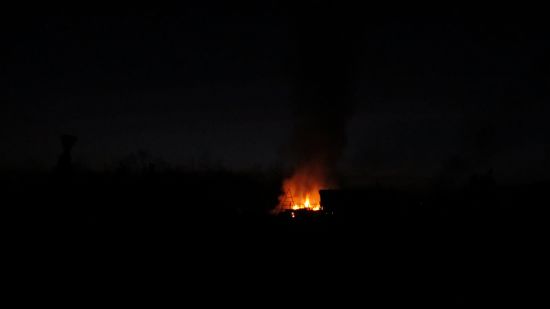
But the blaze wasn’t the only beautiful experience that evening. We got a massive bonus with the row home in the dark. I suspected we would, because we often used to row at night. But years have passed since our last “notturna.”
The lagoon isn’t ever ugly, but it’s like Gloria Swanson — at some moments it’s more beautiful than at others. At noon on a summer Sunday you will not see it at its best.
At night, though, and especially in the winter, it is a place of deep, luminous glamour. The silence, the stillness of the water, the sense of space, the stars, the cold — all the components join to make something much greater than the whole.
I didn’t even try to make any photographs because I knew they would never show what was really there. The barely perceptible movement of the water’s silky surface responding to the oars, which I could sense in my hands and then, from the bottom of the boat, through my feet; the small sound of the oars themselves, slipping through the water and occasionally squeaking against the humid wood of the forcola; the frigid damp of the oar chilling my bare fingers. The coldness of the air that I could breathe all the way down to the bottom of my lungs. The bright white dot of Venus reflected in the water, which floated next to us all the way home on our port side, bobbing back up after every stroke. The misty beam of the lighthouse on Murano shining straight out to sea through the inlet at San Nicolo (4 flashes, 2 seconds pause) and the unexpected way that it appeared closer to us at one point, then five minutes later seemed to be miles away, even though the physical distance had barely changed.
A mere two miles (3.6 km) from the bonfire to our house felt like some pilgrimage suspended in time. In the dark, the lagoon seemed untethered from everything that wasn’t it. No longer was it the plodding, workaday lagoon, the watery equivalent of an enormous Wal-Mart parking lot forced to marry an interstate interchange, but something whole, completely itself, majestic, complex, lacking nothing, needing nothing.
We crossed the Canale delle Navi by the Arsenal and rowed down the rio di San Pietro. Boats, walls, houses, windows, but no people. It was only 7:00 PM and there wasn’t even the sound of a person. We turned into the rio di Sant’ Ana — deserted. Nobody on the fondamenta. Nobody on the bridge. Silence. It was eerie. Beautiful, I guess, but it was as if the lagoon had just let itself go and obliterated everybody but us.
But of course, it hadn’t. At the end of the canal we could hear the Saturday-evening-going-home cacophony. Men shouting, dogs barking, kids wailing.
We now return you to your regular dimension.

